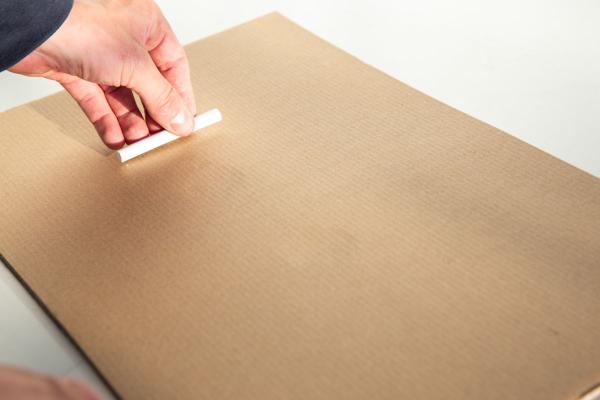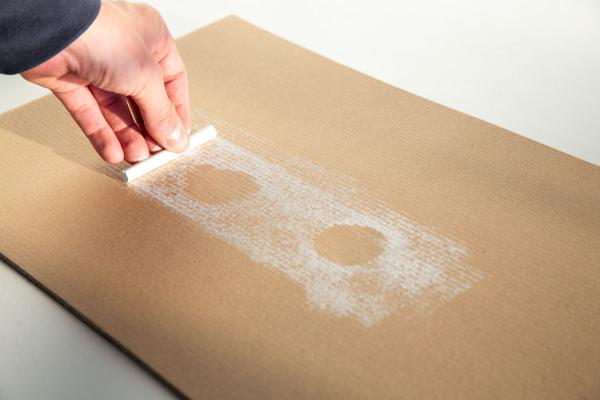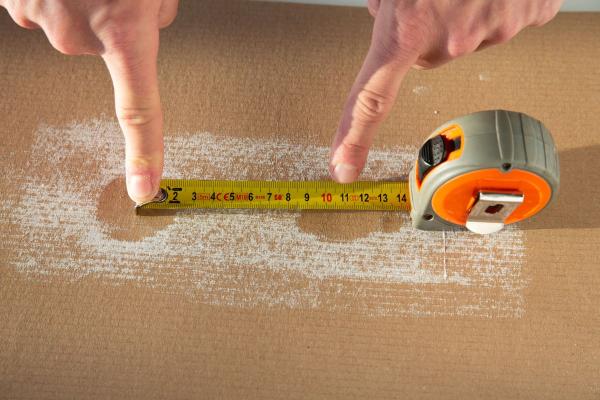Pick your Perfect Saddle with our Saddle Selection Guide
As a road cyclist or MTB rider, you want a bike saddle that is comfortable. Still, many riders experience saddle soreness from riding with a seat that is no longer comfortable. To prevent some of the most common complaints with regards to saddles we’ve come up with an easy way to determine which one is right for you. Our special saddle selection guide will help you determine which seat is right for you in 6 steps. Keep on reading to find out how!
You probably already know that not every bike saddle is right for every person. Also, a bike saddle can start to feel uncomfortable over time. There can be different reasons for this.
Why is your bike seat uncomfortable?
For one, bike saddles are designed to support only part of a rider’s weight. Your arms also support part of your body weight when you’re leaning on your handlebars.
By pedalling consistently, your legs support part of your weight as well. You’ll notice that your saddle feels less comfortable if you haven’t ridden your bike in a long time. This is because your legs are not as powerful as they were the last time you were on your bike.
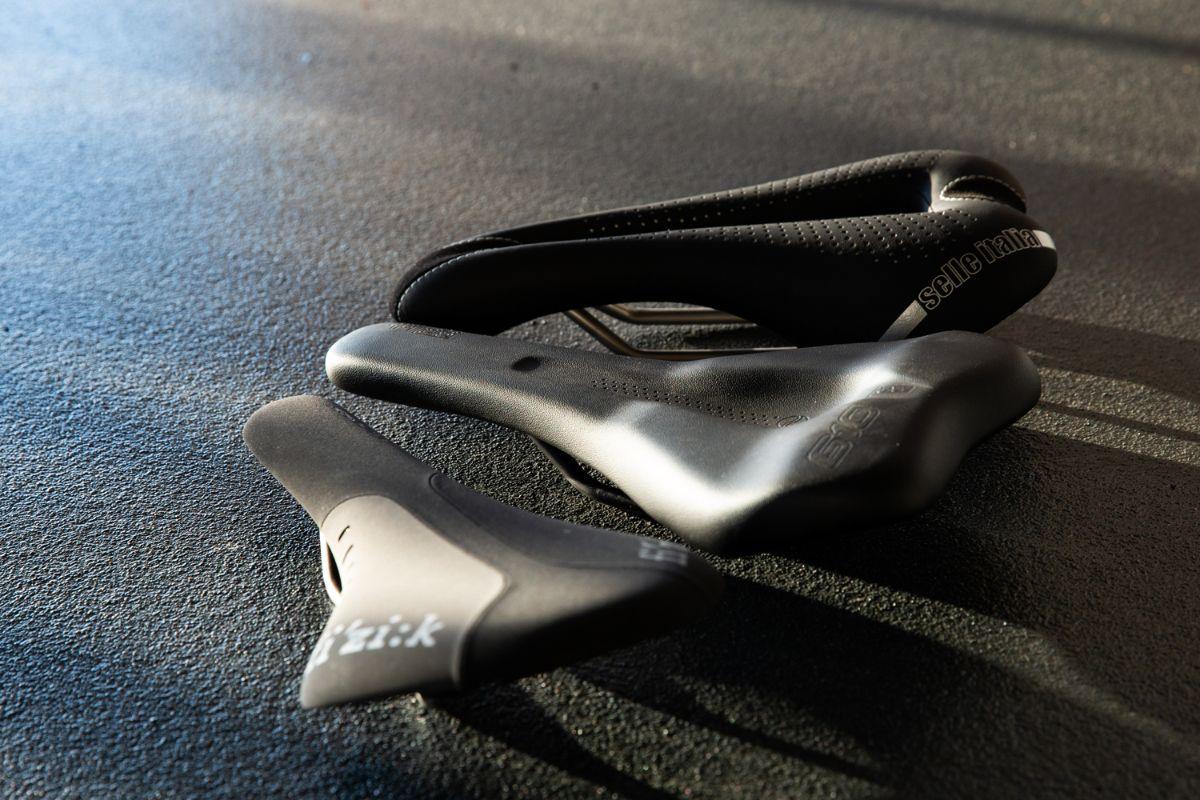
Of course, your saddle will be subjected to a fair amount of wear and tear over the course of time. For instance, the stiffness of your saddle will decrease, which means that it won’t offer the same support it did when you just got it.
Lastly, the saddle you have could have been the wrong choice for you from the beginning. The saddles that come with new bikes are typically fine for short rides, but in the long run, these will not be right for everyone.
Whatever the reason, if your saddle is uncomfortable, you can always simply change it!
Finding the ideal bicycle saddle with the bike saddle selection guide.
If you’re feeling some type of saddle soreness that you haven’t felt before, getting a new saddle is often the solution. But how do you know which one is right for you? Saddle preference is often very personal, every rider has their own wants and requirements.
Unfortunately, there is no such thing as a one-size-fits-all saddle. There are many different brands and even more different bike saddle types and shapes. Every manufacturer and every rider has their own tips and recommendations.
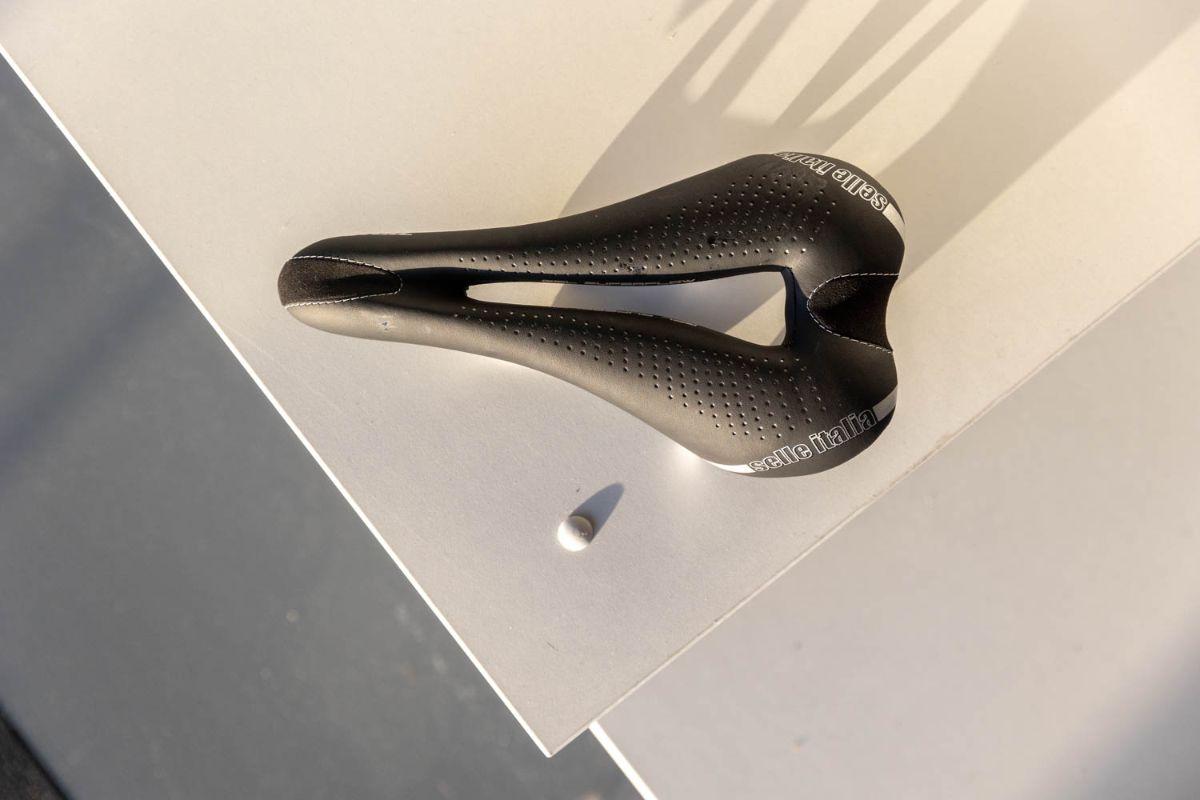
Ask your cycling buddies for advice; most of them will probably describe their own saddle as the perfect choice. For one rider this may be a wide, round saddle with a cut-out, but for another it may be a narrow and flat saddle with no cut-out.
How to use our bike saddle selection guide
To develop our own saddle measuring system we investigated a few different things, from the distance between your sit bones to your riding style. Next, we created a method that allows you to determine the right saddle width at home.
The distance between your sit bones
The most important measurement when choosing a saddle is the distance between your sit bones. These are the bones on the lower end of your pelvis. These bones support your body when you’re riding. The distance between sit bones is different for everyone.
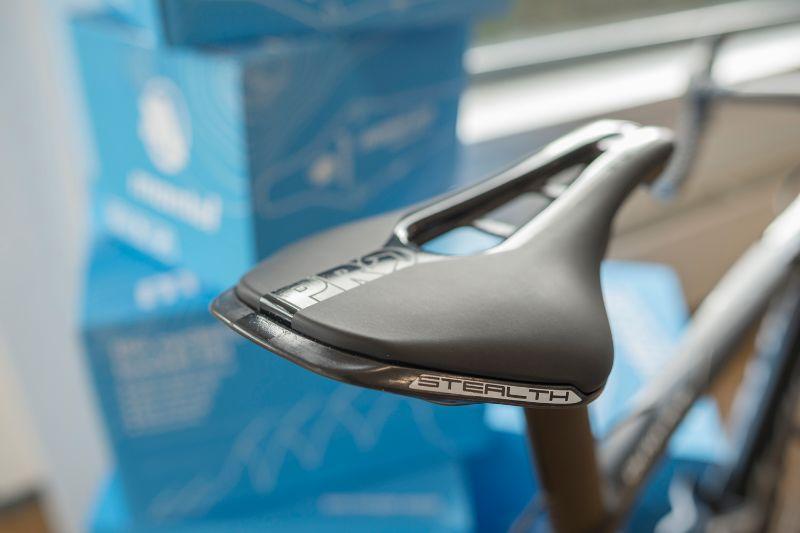

In addition, there is a measurable difference between the sit bones of men versus women. Generally, men’s sit bones are closer together than women’s sit bones. For this reason, women’s bike saddles are typically wider than men’s saddles.
If your sit bones are not sufficiently supported, you’ll slump along the sides of your saddle, resulting in contact and pressure on the wrong points. This is one possible cause of saddle soreness. The image above shows a situation where the sit bones are not sufficiently supported by the bike saddle.
How to measure your saddle width
To measure the distance between your sit bones - and thereby the ideal saddle width - you’ll need a few things:
- Corrugated cardboard
- Chalk
- Measuring tape
10 minutes
-
Gather supplies to determine your saddle width.
As indicated above, you’ll need some corrugated cardboard, a piece of chalk and a measuring tape.
-
Put the cardboard on a table, stool or other flat surface like shown above and sit down on it.
Put your feet on a stool or chair. Next, assume the position that you would have riding your bicycle. If you usually sit in an aerodynamic position, make sure you’re sitting in the same position for this measuring process. The same goes if you typically sit in a more comfortable position. Stay seated in this position for two to five minutes, so you’ll get the best results.
-
Sweep your chalk over the cardboard.
After the impressions have been made, sweep your chalk over the cardboard to make them clearly visible.
-
See where the impressions are located.
If everything went well, you should be able to see two impressions. These come from your sit bones.
-
Measure the distance between the impressions.
Measure from the centre of the left impression to the centre of the right impression. This measurement is the distance between your sit bones.
To get the best results, make sure to put your cardboard on a hard, smooth surface that allows you to apply a good amount of pressure.
To ensure you have the right measurements, we recommend executing the measuring process twice. The distance between the two impressions is best measured in millimetres. Now that you know your sit bone width, you can use the filters on our road & MTB saddles page to find saddles that correspond to your sit bone width. We’ll offer you a selection of suitable options!
The right saddle width is the first important step. Once this has been established, there are still a few other important things to take into consideration when you’re choosing a bike saddle.
Measuring sit bones using aluminium foil
For those who do not have chalk on hand, there is another method you can use to measure sit bone width. This time using aluminium foil, which most have lying around the house.
1. Gather the supplies needed to measure your saddle width.
Get a piece of cardboard, aluminium foil and a measuring tape.
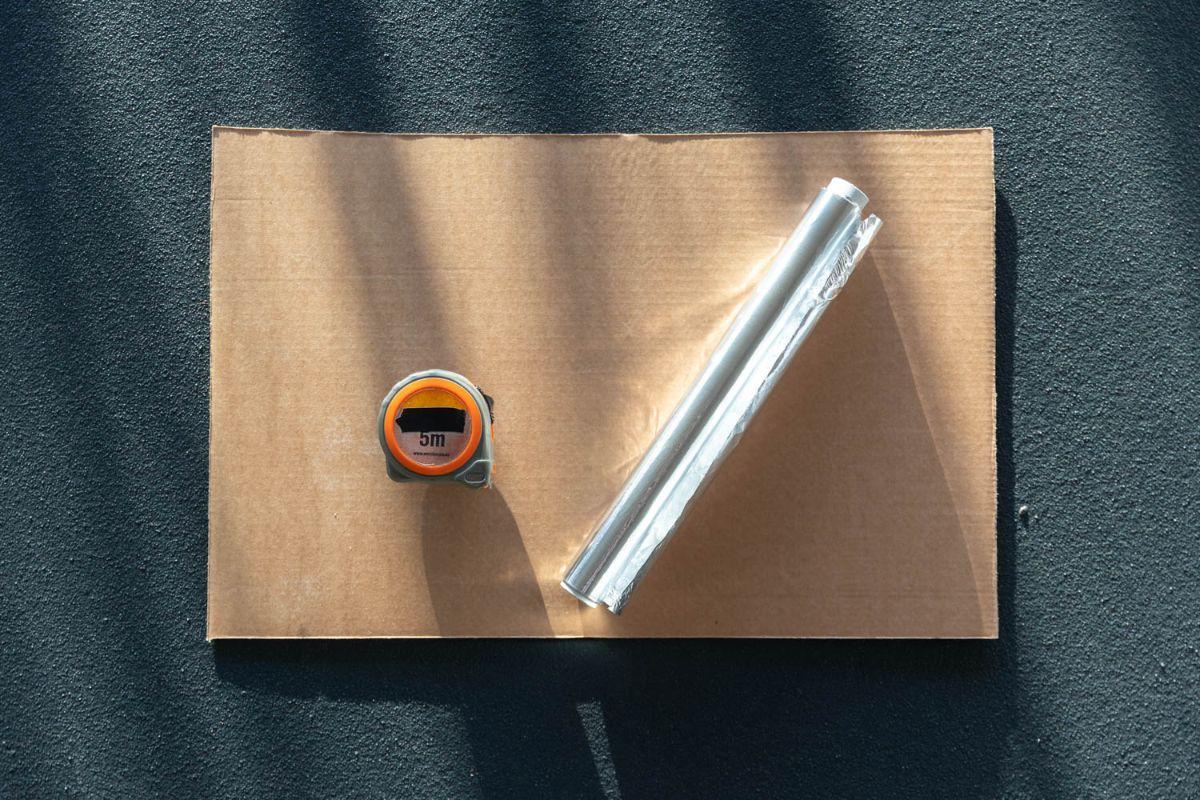
2. Wrap the cardboard in aluminium foil, put it on a flat surface and sit down on it
Put the cardboard on a table, stool or other flat surface like shown above and sit down on it. Put your feet on a stool or chair. Next, assume the position that you would have riding your bicycle. If you usually sit in a deep lean, make sure you’re sitting in the same position for this measuring process. The same applies if you typically sit in a more comfortable position. In order to get clearly visible impressions, stay seated in this position for two to five minutes.
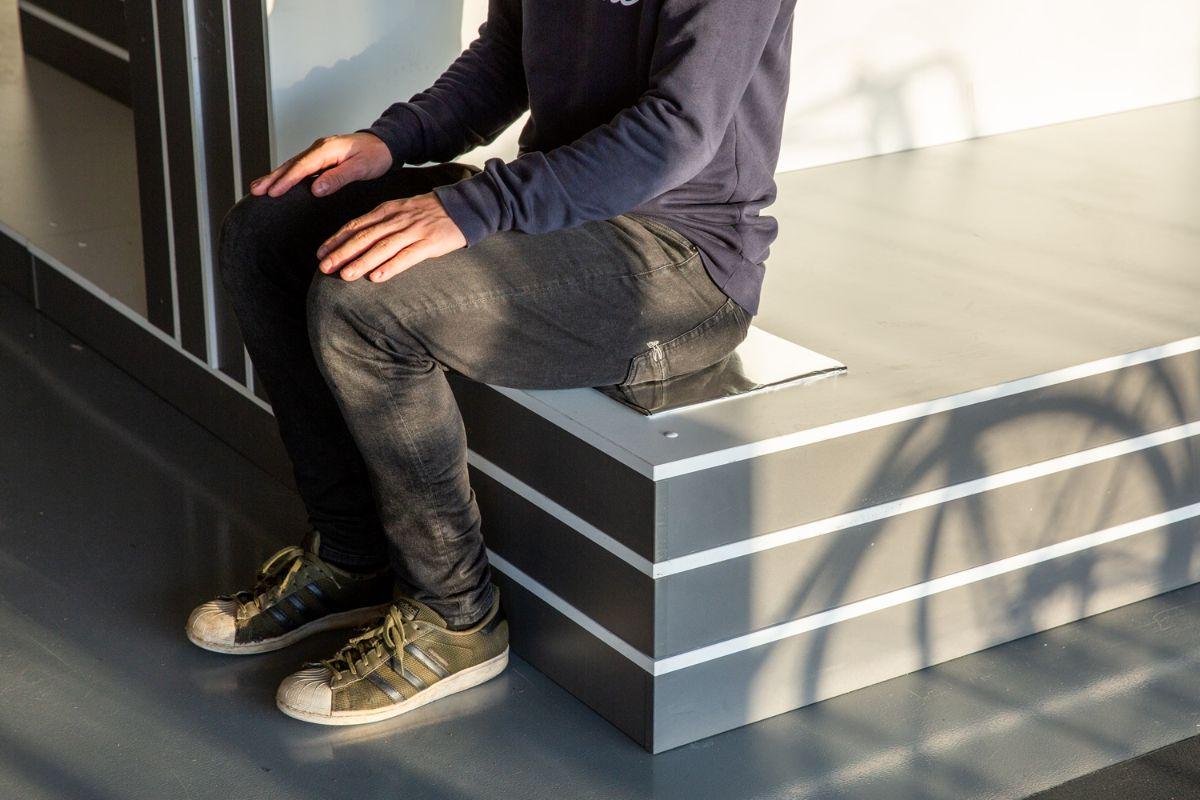
3. Determine where the impressions are located on the foil
Press your fingertips into the impressions.
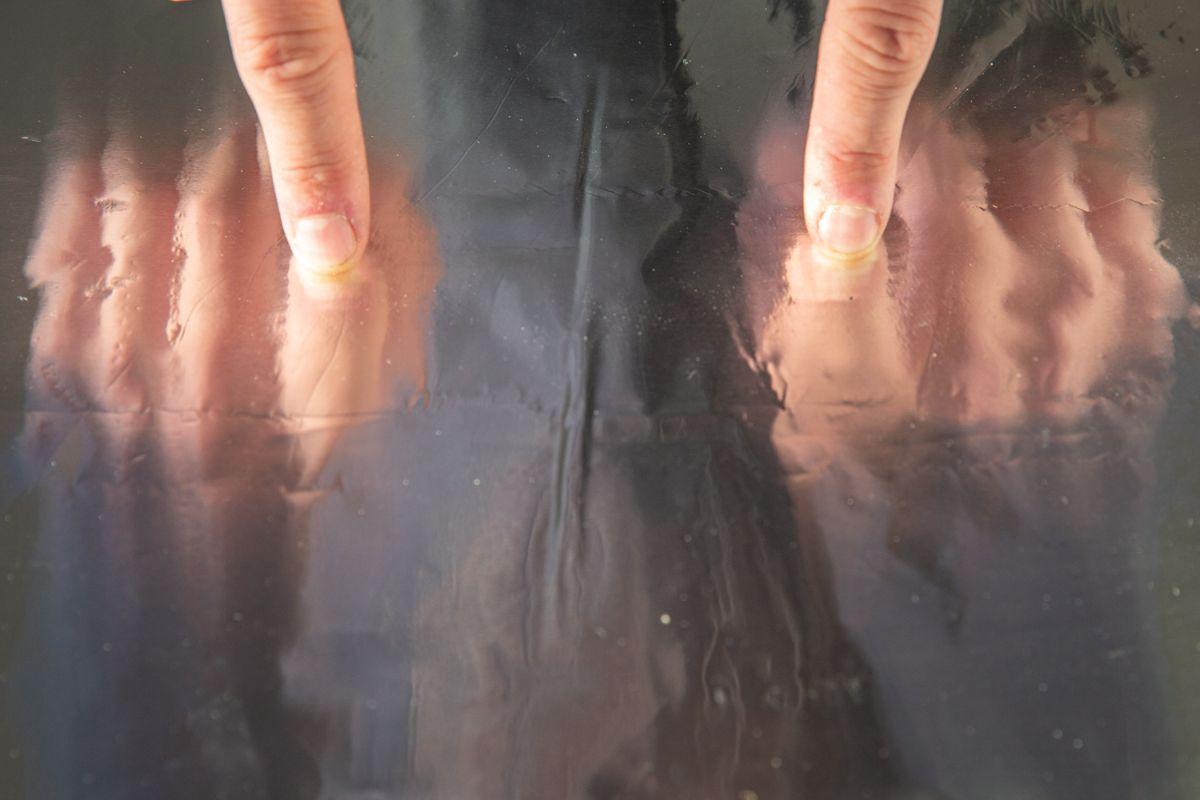
4. Now measure the distance between your sit bones
Measure from the centre of the left impression, to the centre of the right impression. This measurement is the distance between your sit bones.
Now that you know your sit bone width, you can use the filters on our road & MTB saddles page to find saddles with the right width, and we’ll offer you a selection of suitable options!
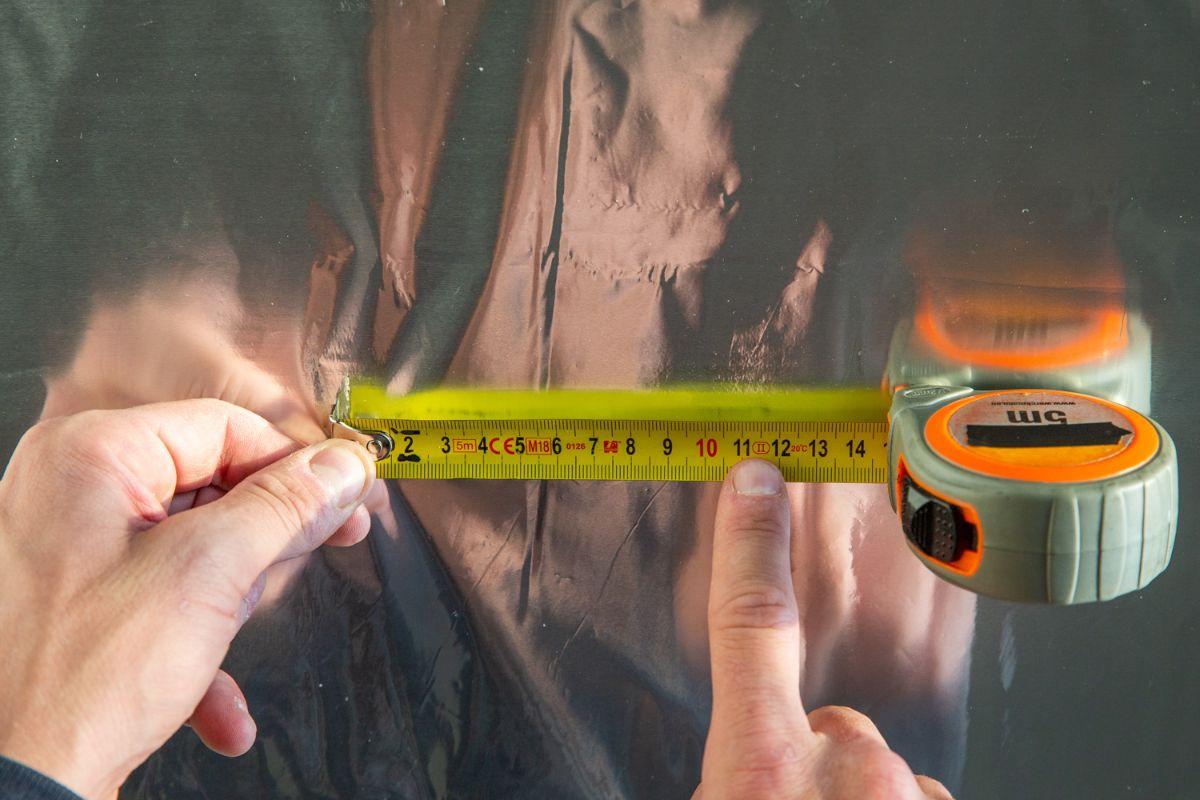
Bike saddle with or without cut-out?
Most saddle manufacturers adhere to the idea that someone who is not very flexible will benefit from a saddle that has a cut-out. The reason for this being that tilting one’s pelvis is easier for someone who is flexible.
Tilting your pelvis relieves pressure from the soft tissue beneath the perineum and allows for the area to be well-circulated. A person who is less flexible has more difficulty tilting their pelvis. As a result, their sitting position puts more pressure on their perineum and in turn, a tingling feeling or numbness may occur.
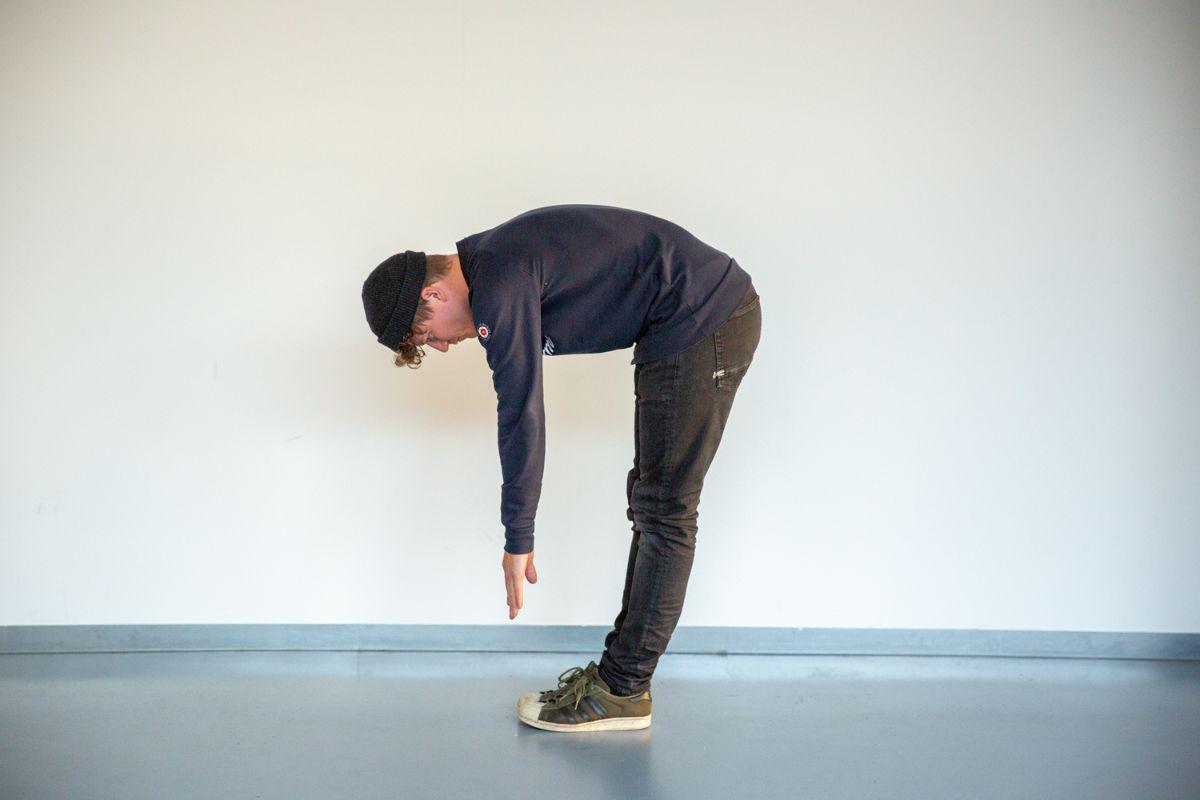
Flexibility can be measured with a simple test. Bend over with your feet side to side, and see if your fingers can touch your toes. If this is not the case, we advise you to find a saddle with a cut-out. If you can reach your toes, both saddle types are suitable for you.
Bike saddle shape
Bike saddles can have different shapes. Some manufacturers say that the degree of movement on the bike should be the main consideration when you're determining what shape your saddle should be. Pro adheres to the theory that riding style should influence your choice of saddle shape. For instance, a flat saddle is made for people who sit still while cycling.
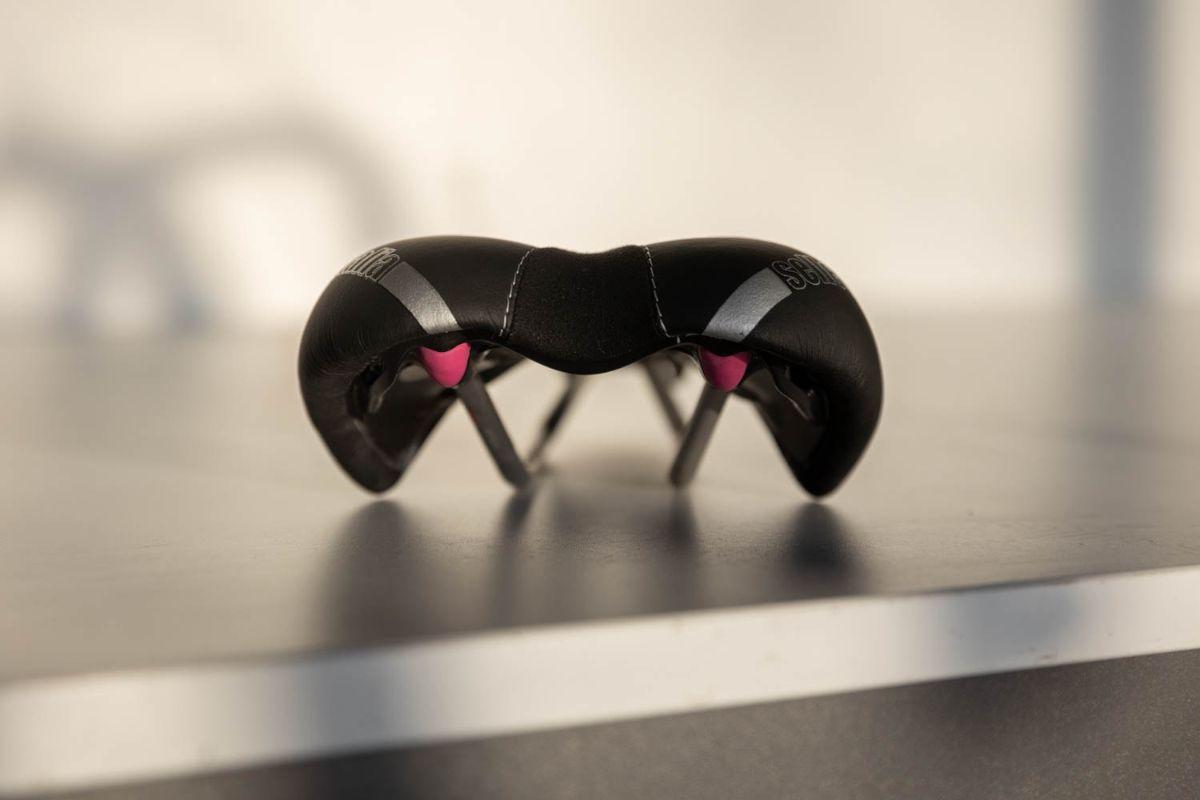
When we say ‘people who sit still when riding’, we refer to people who hardly move their upper body when pedalling. There is a slightly curved bike saddle for the average cyclist, and a saddle that is completely curved for those whom cycling is part of their job.
Bike saddle characteristics
Lastly, there are still a few decisions to make which have little to do with the saddle’s riding characteristics. For example, what material do you want your saddle to be made of? Do you want a lightweight carbon saddle or not?
You often see multiple versions of the same saddle on the market. The difference between them is always reflected by their price tag. If you opt for a lightweight carbon and titanium saddle, it will be priced accordingly.
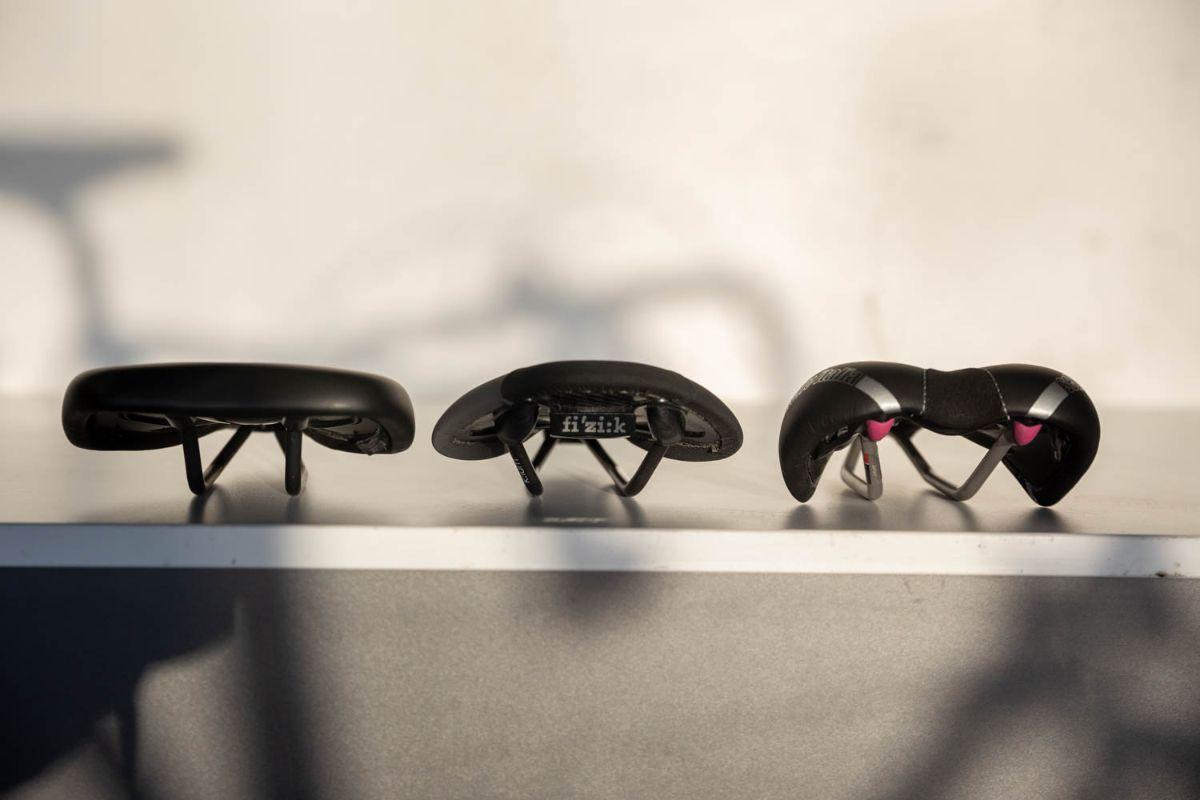
The Fizik Arione is a great example of a saddle that comes in different versions. It is available in a magnesium-alloy, k:ium (titanium-alloy) or a carbon rail. There is also the Fizik Arione R1, a version that has a carbon enforced shell and a carbon rail. Whether you opt for a wallet- friendly or a high-end saddle, the choices are endless.
Types of rails
Why would you choose a magnesium, titanium, or carbon rail? The answer is simple: weight. A carbon saddle rail is a bit lighter than an aluminium saddle rail.
However, a carbon saddle rail won’t always fit a standard seat post. For instance, Ritchey offers different clamps that can make the seat post compatible with the carbon saddle rail.
Hard or soft bike saddle?
Hardness preferences are different for each person. Some people love riding with a very hard saddle that is completely made of carbon. Others want a softer feeling saddle.
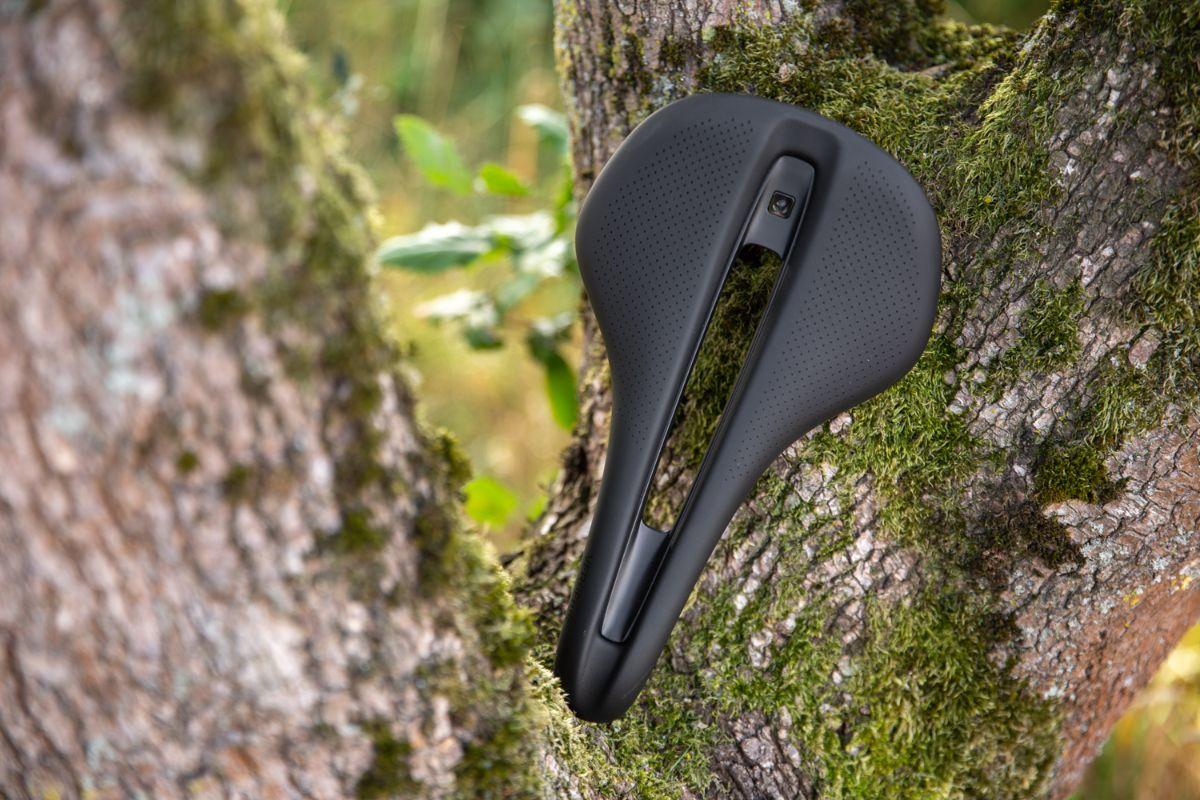
The longer your rides are, the more you will benefit from a harder bike saddle. For the creation of most road bike saddles, this notion has already been taken into account. That’s why you typically find softer saddles on city bikes.
A bike saddle that is too soft will cause your sit bones to sink into the saddle. This could cause pressure on the perineum, even though the sit bones are well-supported.
Mees Janssen
I am very occupied with everything that has to do with cycling in my spare time. The fact that I get to do this during my job as well makes it all the more special. Since I live in Arnhem, I like to go cycling in my “backyard” (de Posbank) with my road bike or mountain bike. Besides cycling myself, I also love to watch professional cycling on the tv. My television is doing overtime during the summer, because I like to follow all the big cycling tours like the Giro, the Tour de France and the Vuelta. It may come as no surprise that when the Giro d´Italia crossed Arnhem in 2016, I was over the moon!
Related posts

Winter shoes for cycling on chilly, cold and ice cold days [Buyer’s Guide]
13 December 2022You demand more from your cycling shoes during winter. Few things are as uncomfortable as riding with cold feet ...
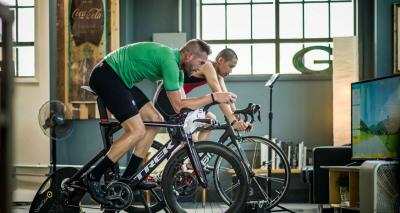
Turbo Trainers 2018-2019 - Which Trainer Best Suits Your Needs? [Buyer’s Guide]
13 October 2022Want to cycle with and against fellow cyclists using a turbo trainer at home? Thanks to the rise of Zwift that’s ...
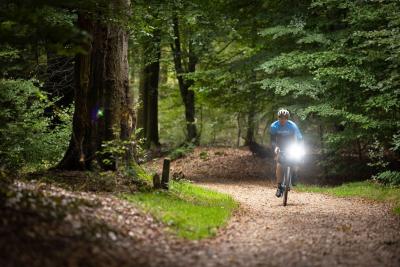
Bike Lights Buyer’s Guide 2022-23: Be safe on the road!
27 September 2022Having bike lights might be the easiest and most important way to be safe whilst cycling ...
 Nederland
Nederland België
België Deutschland
Deutschland United Kingdom
United Kingdom Finland
Finland Ireland
Ireland Luxembourg
Luxembourg Portugal
Portugal Poland
Poland Österreich
Österreich France
France España
España Italia
Italia Sverige
Sverige Danmark
Danmark












































































































































































































































